Text Features Teaching Resources
Help students use text features in nonfiction and fiction texts with printable worksheets, activities and more teaching resources created by our teacher team just for elementary teachers.
This teaching resource collection includes TEKS and Common Core curriculum-aligned activities and worksheets designed to help students identify and explore the various features writers and authors use to make text more readable. Editable resources are available to easily differentiate instruction for individual learners and your state standards.
Has it been a while since you taught ELA, or at least this particular part of the curriculum? Read on for a primer from our teacher team about teaching text features! Maybe you already know this, but bear with us. Just like our students, sometimes we could use a little refresher!
What Are Text Features? A Kid-Friendly Definition
You know what a text feature is ... but how do you explain the concept to your students? Here's a simple definition you can use with your students!
Text features are the parts of a text that give the reader additional information. They help make the text more organized and easier to read.
16 Text Feature Examples to Share With Your Students
So what are some text features you can identify in your lesson plans? Let's take a look at the most common examples students can use to navigate various types of texts effectively.
Title
Another word for the name of the text, the title is usually found at the beginning. It provides a general idea of the topic or subject matter.
Heading/Subheading
Headings and subheadings are titles within a fiction or nonfiction text that indicate different topics or subtopics covered. They help our students locate specific information. They also provide an overview of the text's structure.
Subtitles
Subtitles are smaller headings within a section of text that divide the content into smaller, more manageable parts. These features can help readers (like our students!) identify and comprehend specific ideas or sections within a larger text.

Table of Contents
The table of contents can be found at the beginning of a book or long text. This handy tool lists the main sections or chapters and their corresponding page numbers. This table is especially helpful if you're trying to find specific information quickly!
Glossary
If a text introduces new vocabulary words, students can head to the glossary. This list of important terms and their definitions is typically found at the end of a book or text.
Index
The index is also typically located at the end of a book. This tool — mostly found in nonfiction texts — provides the reader with an alphabetical list of topics or keywords covered in the text, along with the corresponding page numbers. Like the table of contents, the index is useful when you need to find information fast.
Captions
Captions are brief explanations or descriptions located near images or illustrations. These lines of text provide additional information about the visual content and help readers understand its relevance to the text.
Illustrations/Photographs
Visual representations, such as drawings or photographs, are all features that can support the text and provide additional information or clarification.
Diagrams/Charts/Graphs
Like photos and illustrations, charts, diagrams and graphs offer a visual representation of data or information to make it easier for the reader to comprehend. This text feature helps the writer present it in a more organized and understandable format.
Maps
Another form of visual representation that shows up in text is the map, a text feature that shows geographic locations or regions. Maps help readers understand the spatial relationships between places mentioned in the text.
Labels
Sometimes a text will have words or phrases attached to specific parts of an illustration or diagram to identify or explain them. These labels can help readers understand the different elements or components within the visual representation.
Bullets/Numbered Lists
Lists are sometimes used in texts to present information in an organized manner. Bullets are typically used for items that are not in a specific order, while numbered lists indicate a sequence or hierarchy.
Sidebar
A small section of text that is included alongside the main text is called a sidebar.
This type of text feature contains additional information related to the main topic, such as interesting facts, definitions or examples that can enhance the reader's understanding.
Bold/Italicized/Underlined Text
Formatting features such as bolding or italicizing words or adding an underline can help draw the reader's attention to specific words or phrases.
- Bold text — Indicates important or emphasized information
- Italicized text — Used for titles of books or works and words written in other languages
- Underlined text — Used for hyperlinks in digital texts
Footnotes/Endnotes
Another helpful text feature most often seen in non-fiction texts, footnotes and endnotes are additional explanations, comments, or references located at the bottom of a page (footnotes) or at the end of a text (endnotes). They provide supplementary information without interrupting the flow of the main text.
Text Boxes
A final example of text features is the text box. These separate sections within a text highlight important or additional information. Because they're visually distinct from the main text, they help draw the reader's attention to specific details or ideas.
- Free Plan
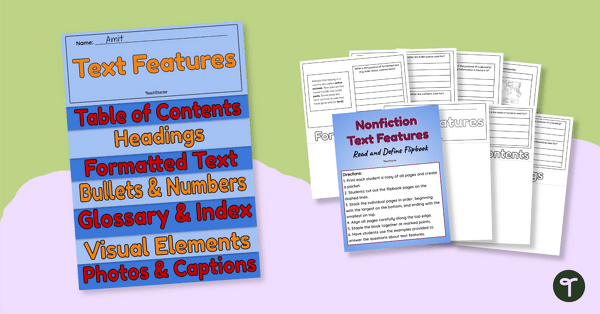
Nonfiction Text Features Flipbook – Read and Define
Use this text features flipbook as a reading center activity to teach your students about the purpose of text features in nonfiction books.
- Free Plan
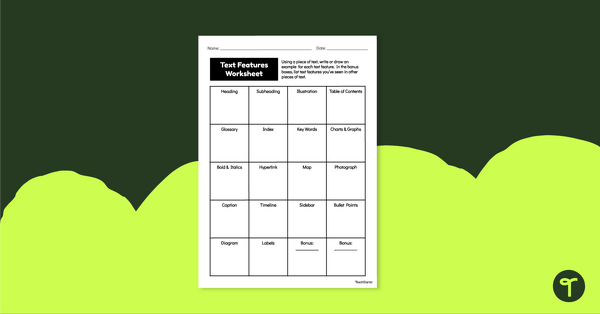
Text Features Worksheet
Download this nonfiction text features worksheet so students can practice locating different types of text features found in a nonfiction text.
- Plus Plan
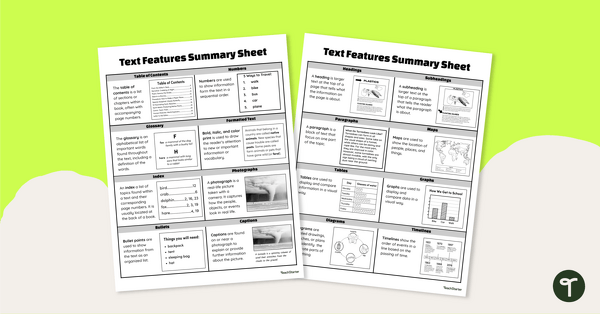
Nonfiction Text Features Study Guide
Download this list of text feature examples to teach your students about the purpose of these important textual elements.
- Plus Plan

Nonfiction Visual Features Cut and Paste Worksheet
Use this visual text features worksheet when exploring text features such as photographs, maps, charts and diagrams with your students.
- Plus Plan
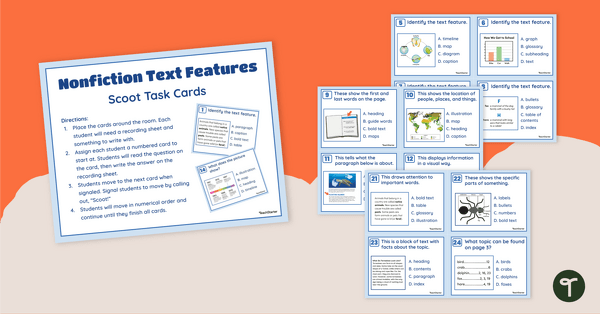
Nonfiction Text Features Task Cards
Get students exploring text feature examples with this set of tack cards perfect for reading centers.
- Free Plan
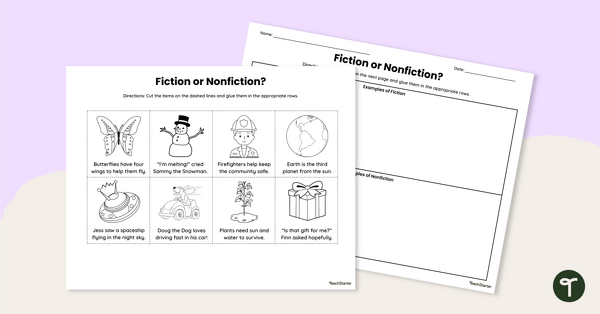
Fiction or Nonfiction? Cut and Paste Worksheet
Use this fiction and nonfiction worksheet when teaching your students about the differences between fiction and nonfiction texts.
- Plus Plan
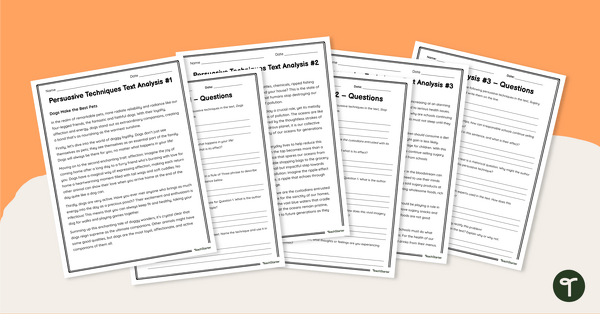
Analyzing Persuasive Techniques Worksheets
Get students analyzing persuasive techniques and their effects on audiences with this set of three texts with accompanying questions.
- Plus Plan
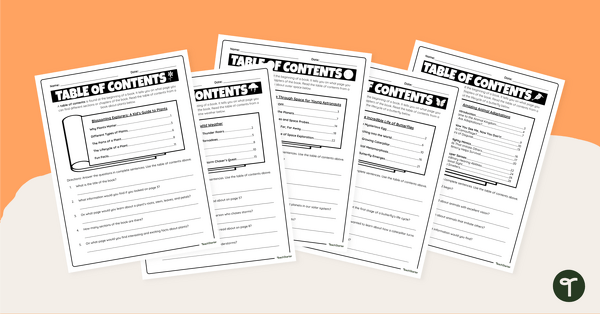
Using Tables of Contents Worksheets
Download these table of contents worksheets to provide your students with practice working with this valuable nonfiction text feature.
- Plus Plan
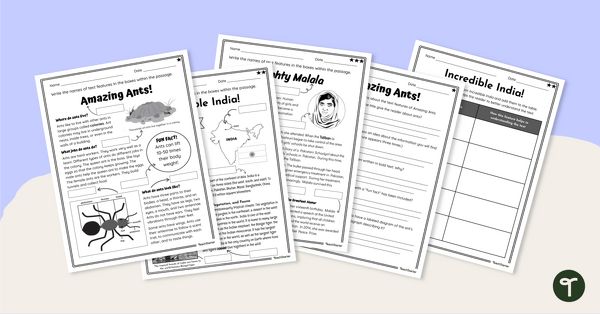
Label the Nonfiction Text Features Worksheets
Have your students label text features in nonfiction texts with this set of three differentiation text features worksheets for elementary students.
- Plus Plan
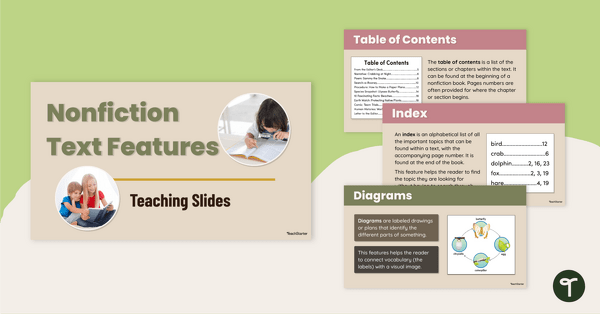
Nonfiction Text Features Teaching Slides
Explore the features of nonfiction texts with your students using this detailed and age-appropriate slideshow for elementary school reading lessons.
- Plus Plan
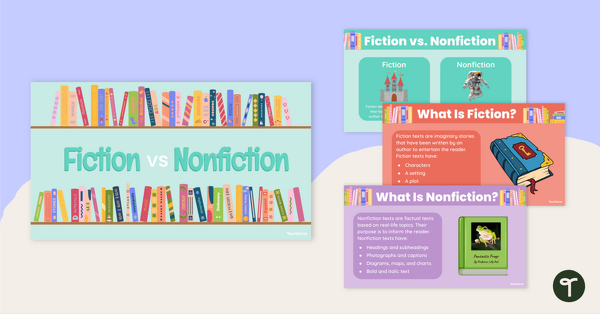
Fiction vs Nonfiction Teaching Slides
Teach your students the difference between fiction and nonfiction books with this age-appropriate teaching presentation for elementary school ELA lessons.
- Plus Plan
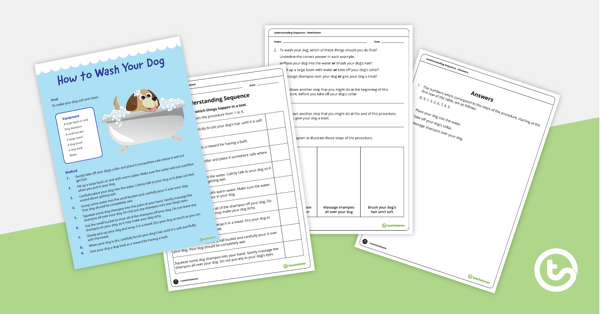
Procedural Writing Sequencing Worksheet – How to Wash Your Dog
Use this procedural writing worksheet to teach your students about the importance of sequence in procedure texts.
- Plus Plan
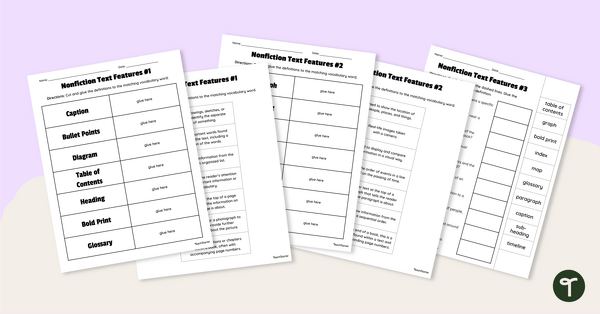
Nonfiction Text Features Cut and Paste Worksheets
Use this text features matching worksheet when exploring the features of nonfiction texts with your students.
- Plus Plan
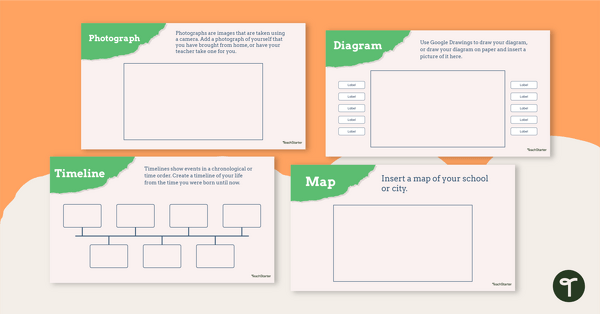
Nonfiction Text Features – All About Me Project
Implement a text features project with an “All About Me” theme to explore informational text features with your students.
- Plus Plan
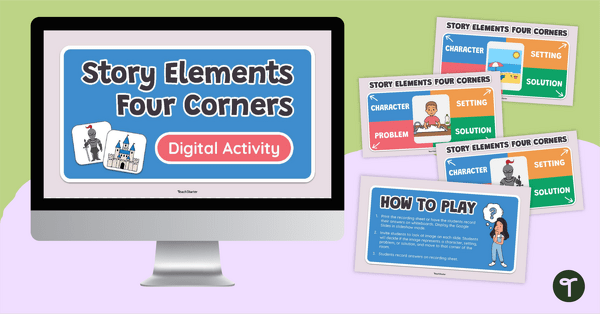
Story Elements Four Corners
Engage your students in exploring key story elements with this Four Corners activity!
- Plus Plan
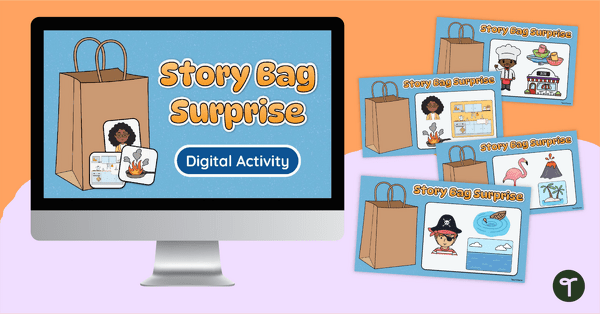
Story Bag Surprise - Story Elements Digital Activity
Introduce and explore different story elements with this story bag surprise digital activity for the whole class to enjoy.
- Plus Plan
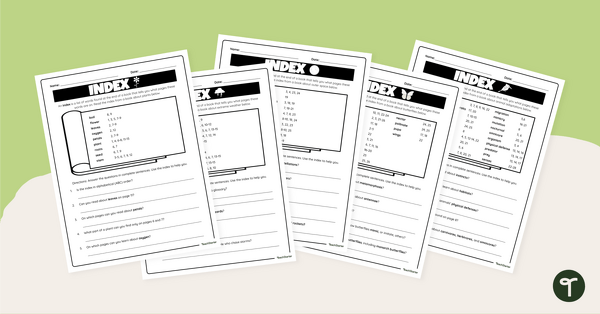
Using Indexes Worksheets
Teach students about the index text feature with this set of worksheets perfect for elementary students.
- Plus Plan
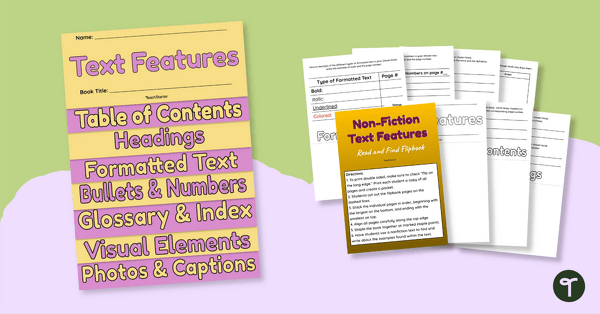
Nonfiction Text Features Flipbook – Read and Find
Get your students to find text features in nonfiction books with this student-centered flipbook activity perfect for reading centers.
- Plus Plan
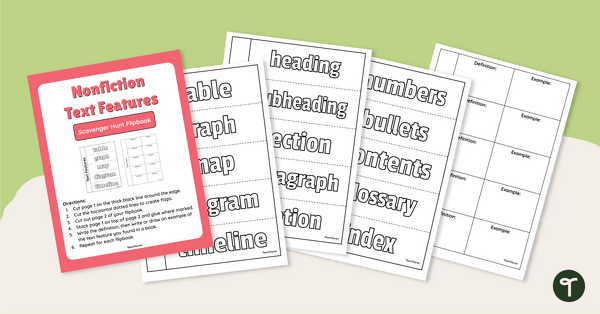
Nonfiction Text Features – Scavenger Hunt Flipbook
Get students exploring nonfiction text features with this set of scavenger hunt flipbooks perfect for elementary students.
- Plus Plan
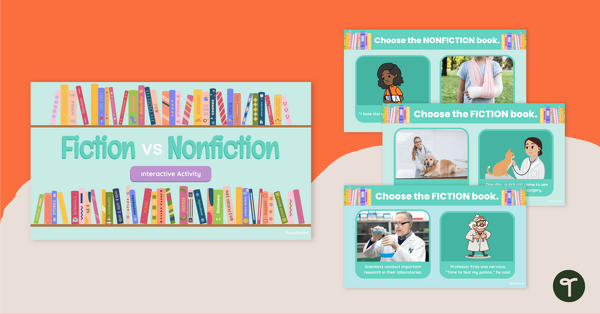
Fiction vs Nonfiction Interactive Activity
Explore fiction and nonfiction examples with your students using this digital game for Kindergarten and 1st grade students.
- Plus Plan
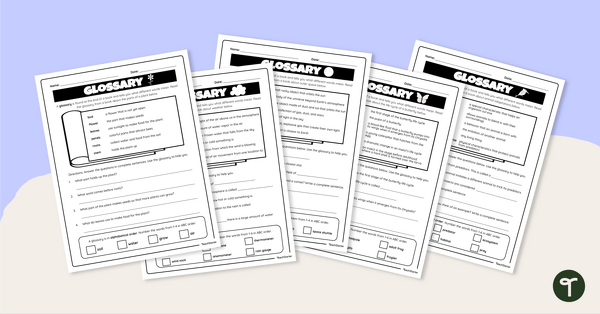
Glossaries Worksheets
Download these glossary worksheets to provide your students with practice working with this valuable nonfiction text feature.
- Plus Plan
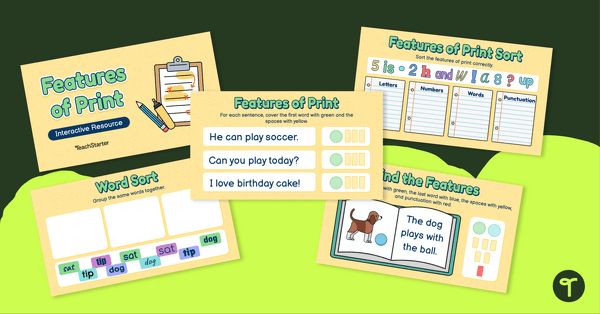
Google Slides Interactive - Features of Print
Use a Google Interactive activity to aid beginning readers in recognizing print features and concepts of print.
- Plus Plan
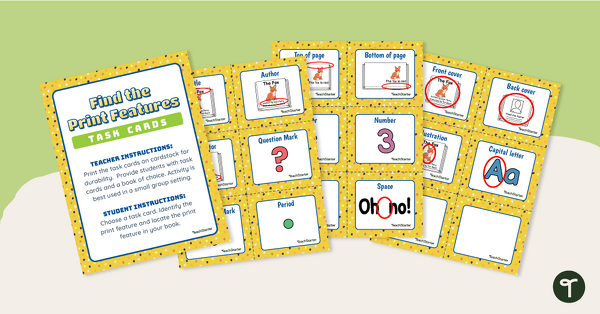
Find the Print Features Task Cards (K-1)
Use these task cards to aid kindergarten and first-grade readers in recognizing print features and concepts of print.
- Plus Plan
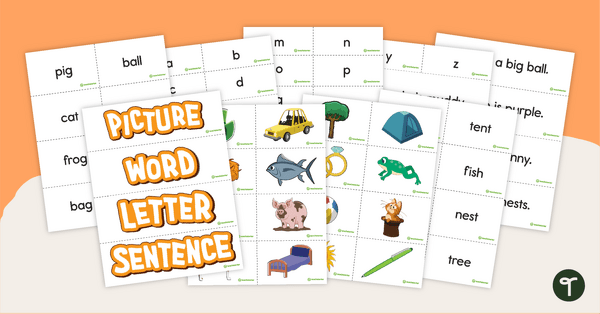
Picture, Word, Letter, or Sentence – Sorting Activity
Help your students distinguish between pictures, letters, words, and sentences with this sorting activity.
- Plus Plan
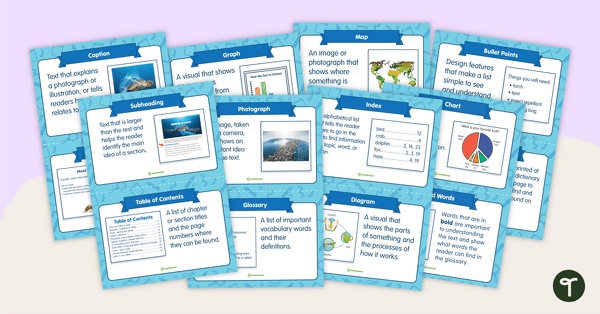
Text Features Flashcards
Teach students the definitions of text features such as headings, sidebars, captions and many more with this set of flashcards for elementary students.
- Plus Plan
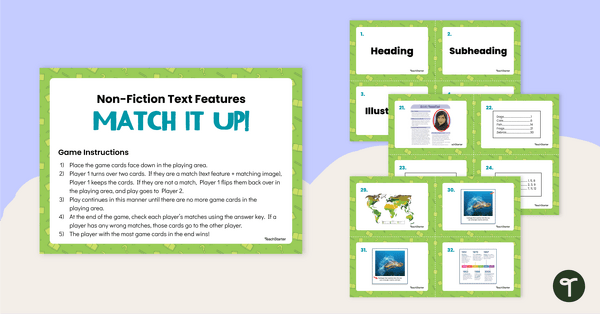
Nonfiction Text Features: Match It Up!
Download this nonfiction text features game to teach elementary school students about the common text features of informational texts.
- Plus Plan

Fiction vs Nonfiction Posters
Teach students the difference between fiction and nonfiction with this set of two classroom posters perfect for Kindergarten classrooms.